The Vietnam Lunar New Year, known as Tết Nguyên Đán, is the most significant and widely celebrated holiday in Vietnam. It marks the arrival of spring according to the Lunar calendar and is a time for family reunions, giving thanks, and welcoming a prosperous new year. In this article, Palm Vietnam Travel will explore with you the traditions, customs, and unique features of the Lunar New Year (Tet Nguyen Dan), providing a comprehensive guide to this culturally rich and stylish festival.
The Significance of Tết Nguyên Đán
Tết Nguyên Đán holds deep cultural and spiritual significance for the Vietnamese people. It is a time to express gratitude for the past year and welcome the new year with hopes for prosperity, happiness, and good fortune.
The festival symbolizes the arrival of spring, a season of renewal and new beginnings. Families come together to honor their ancestors, pay respects to deities, and strengthen bonds with loved ones.
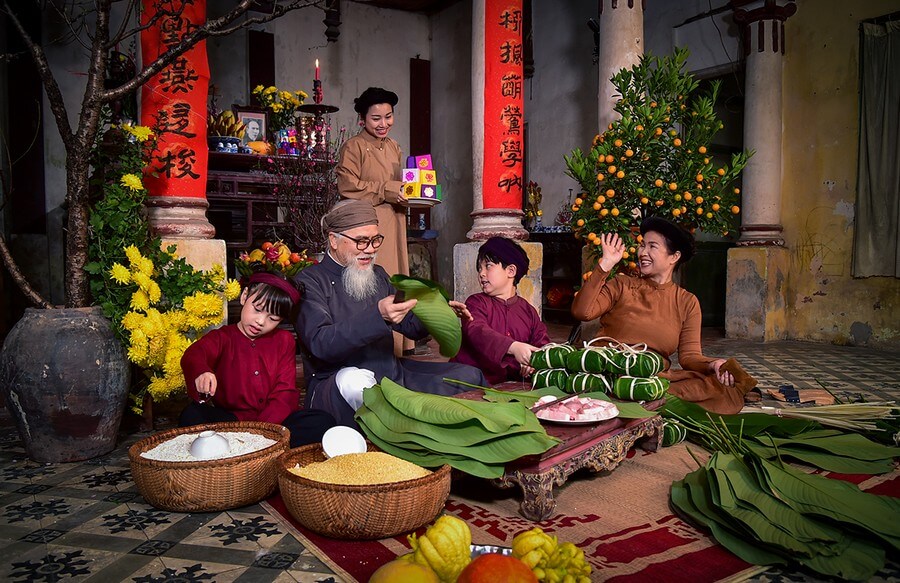
The beauty of Vietnamese culture.
Preparation and Cleaning
The preparation for Tết Nguyên Đán begins well in advance, with families engaging in thorough cleaning and decorating of their homes. This process is not just about physical cleanliness but also about sweeping away any negative energy or bad luck from the previous year.
Every corner of the house is meticulously cleaned, and special attention is given to the ancestral altar, which is adorned with fresh flowers, fruit, and incense.
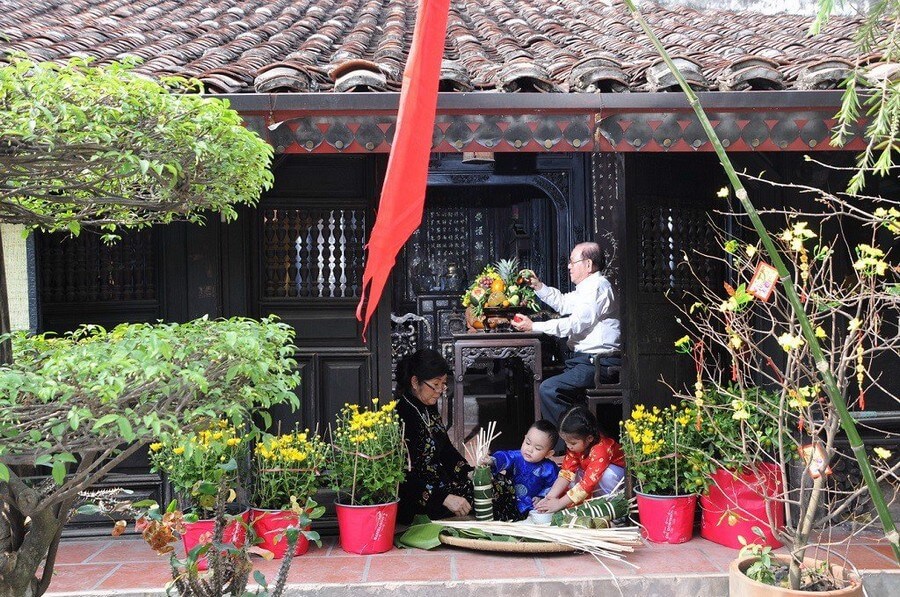
Traditional Foods and Delicacies
Food plays a central role in Tết Nguyên Đán celebrations, with families indulging in a variety of traditional dishes and delicacies. Among the most iconic foods associated with the festival is Bánh Chưng, a sticky square cake made from glutinous rice, mung beans, and pork wrapped in banana leaves. This cake symbolizes the Earth and is a staple on every Vietnamese family’s dining table during Tết.
Another popular dish is Giò Chả, a Vietnamese sausage made from lean pork and various spices. It is often served with Xôi, sticky rice, and Bánh Chưng. Thịt Kho Hột Vịt, braised pork belly with duck eggs, is also a favorite during this festive season. The dish is cooked with coconut juice and fish sauce, resulting in tender and flavorful meat.
Xôi, sticky rice, is another essential component of Tết Nguyên Đán. It comes in various forms, such as Xôi Lạc (sticky rice with peanuts), Xôi Đỗ Xanh (sticky rice with mung beans), and Xôi Gấc (sticky rice with special “gấc” fruit). Each variation carries its unique flavors and symbolism, representing luck and prosperity for the new year.
Mứt, or jam, is a popular snack enjoyed during Tết. It is typically served to welcome guests and comes in a wide variety of flavors, including ginger, carrot, coconut, pineapple, pumpkin, lotus seed, and star fruit. These sweet treats add a touch of festivity to the holiday atmosphere.
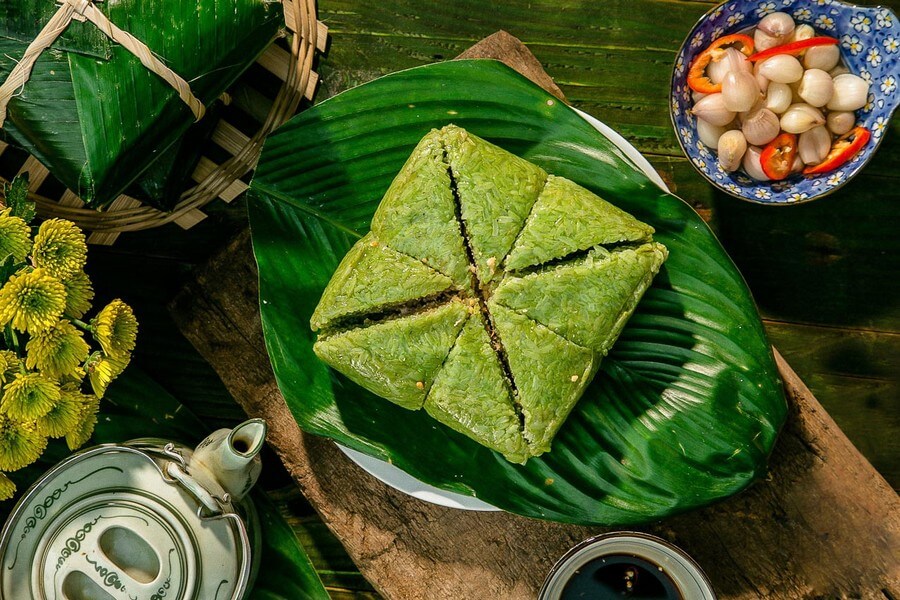
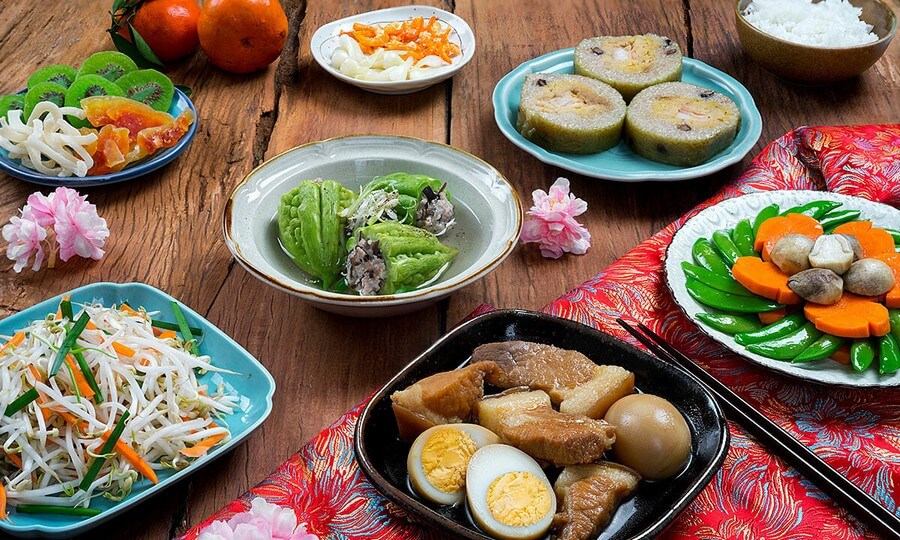
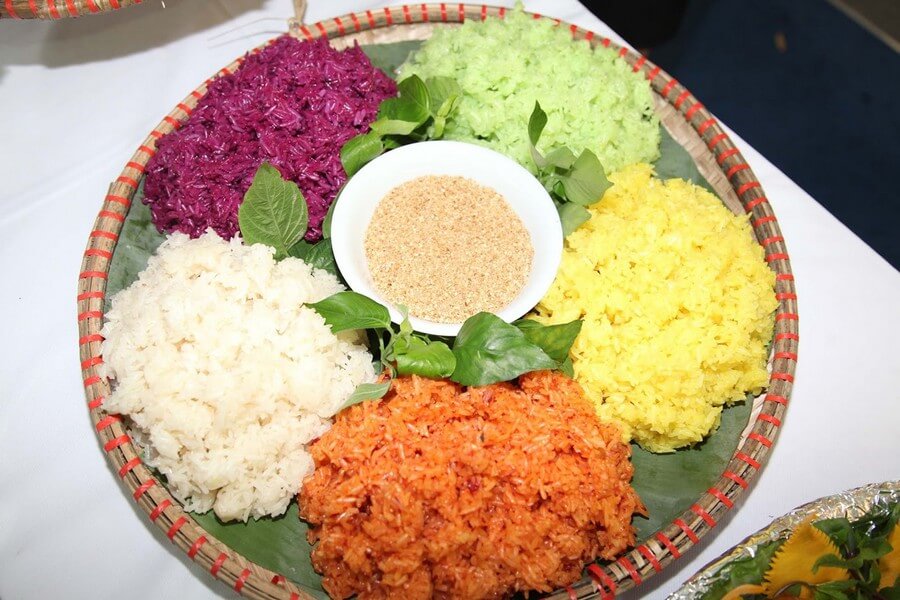
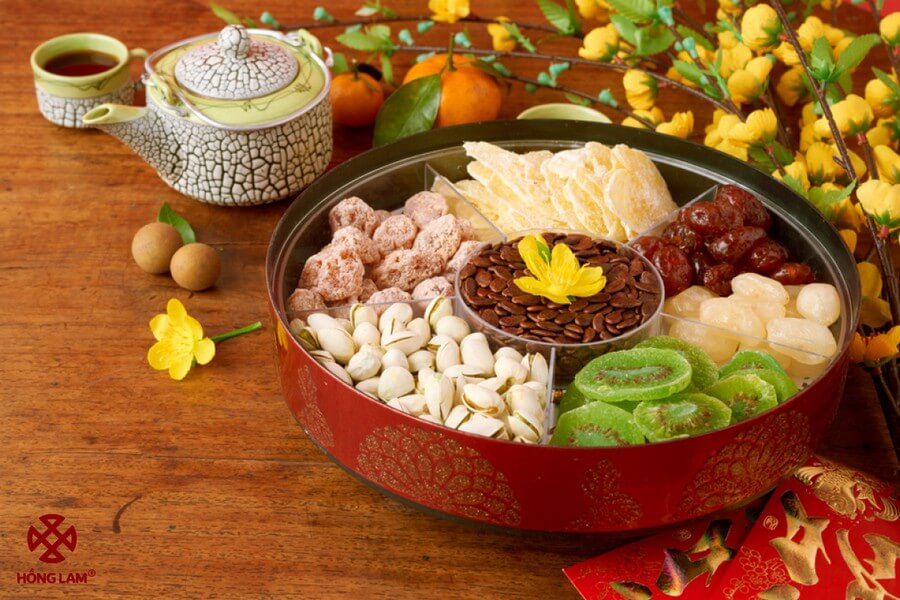
Traditional Customs and Rituals
Tết Nguyên Đán is rich in customs and rituals that have been passed down through generations. These practices are believed to bring good luck, ward off evil spirits, and ensure a prosperous year ahead. One of the most significant customs is the giving of Lì Xì, lucky money, to children. It is believed that this gesture will bring them good fortune and blessings for the coming year.
Another important ritual is Xông Nhà, which involves inviting the first visitor into the home on the first day of Tết. The first person to enter the house is considered a bearer of luck for the family, so careful consideration is given to choosing an individual who embodies success, good character, and positive energy. This tradition sets the tone for the entire year, as the family hopes for a year filled with good luck and auspicious events.
Visiting pagodas and temples is also a common practice during Tết. Vietnamese people pay their respects to deities, pray for blessings, and seek guidance for the upcoming year. It is a time for reflection, gratitude, and spiritual renewal.
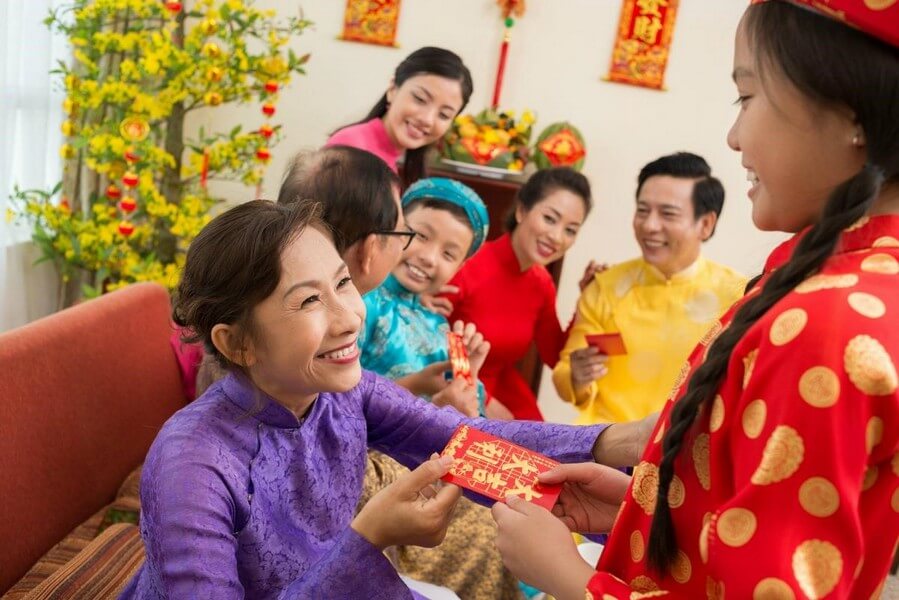
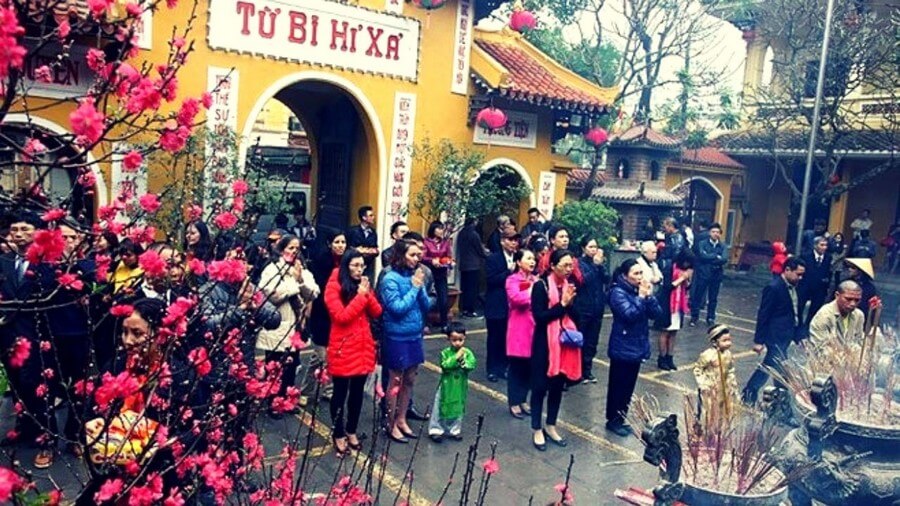
Decorations and Symbolism
During Tết Nguyên Đán, homes, and public spaces are adorned with vibrant decorations that symbolize luck, prosperity, and happiness. Cây Nêu, an artificial New Year Tree made from a bamboo pole, is a common sight. The top of the pole is decorated with various objects, including good luck charms, origami fish, and cactus branches. This tree represents the connection between heaven and earth and is believed to bring good fortune to the household.
Hoa Mai, Ochna integerrima, is a traditional flower associated with Tết in the central and southern parts of Vietnam. Its bright yellow blooms symbolize good luck and prosperity. In the northern part of Vietnam, Hoa Đào, peach blossoms, are the preferred decoration. The delicate pink flowers represent new beginnings and fertility. Kumquat trees, with their vibrant orange fruits, are also popular decorations, representing wealth and abundance.
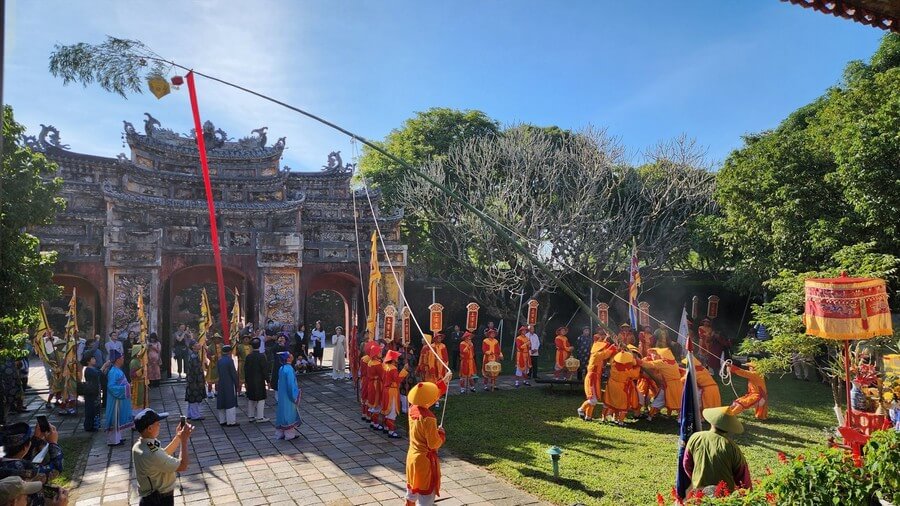
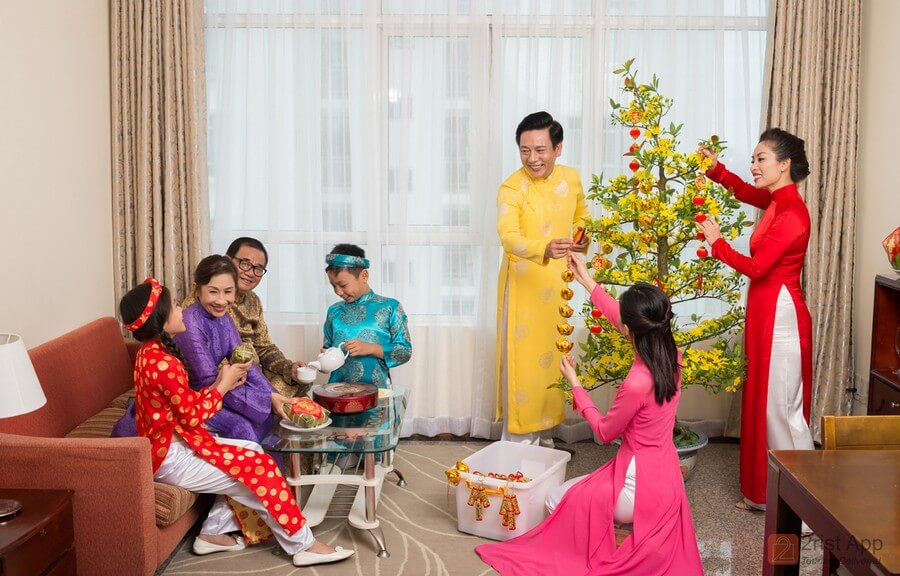
Regional Variations and Celebrations
Although Tết Nguyên Đán is celebrated throughout Vietnam, there are regional variations in customs and traditions. Each region has its unique practices, reflecting local beliefs and cultural heritage.
For example, in the north, people often visit their parents on the first day of Tết, while in the south, they visit their parents on the second day. Teacher’s Day is observed on the third day, with visits to teachers and expressions of gratitude for their guidance.
Tết Nguyên Đán is a time for people to return to their hometowns and spend time with their families. It is a period of joyous reunions, feasting, and storytelling. Communities come together to organize parades, cultural performances, and fireworks displays, adding to the festive atmosphere.
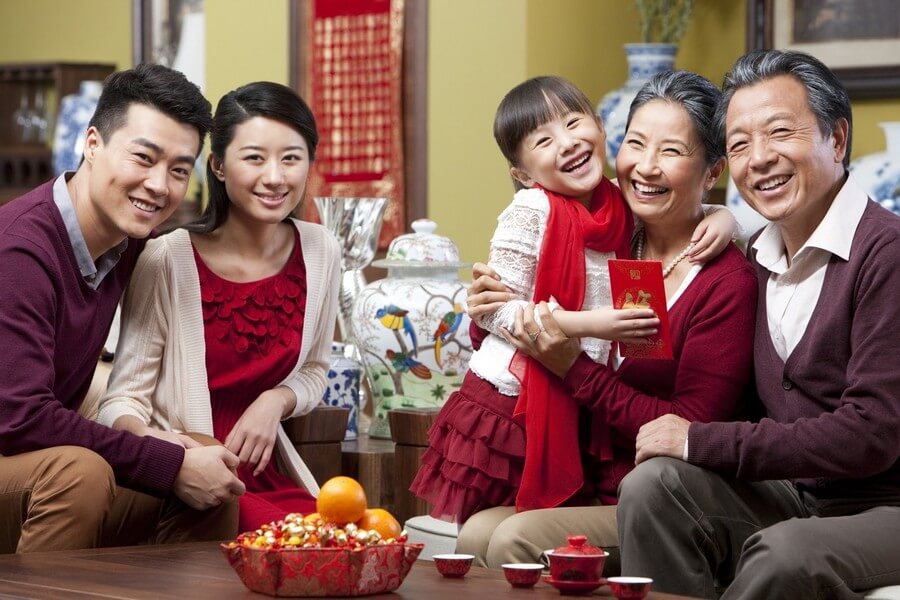
Conclusion
Tết Nguyên Đán is a celebration of family, tradition, and hope for a prosperous future. It is a time when Vietnamese people honor their ancestors, express gratitude, and welcome the new year with open hearts. The festival’s customs, traditional foods, and vibrant decorations reflect the rich cultural heritage of Vietnam. Whether it’s cleaning and decorating homes, preparing sumptuous feasts, or participating in age-old rituals, Tết Nguyên Đán is a time for joy, reflection, and renewal.
